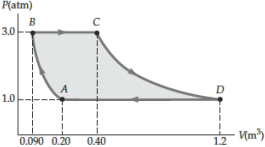PHYS1250 Fundamental Physics Assignment Three
Hello, dear friend, you can consult us at any time if you have any questions, add WeChat: daixieit
PHYS1250 Fundamental Physics
Assignment Three
Due Date: November 11, 2023
The magnitude of gravitational acceleration is denoted by g throughout this paper.
The problems in this paper have a wide range of difficulties. They are specially designed to strengthen students’ concepts and to develop the problem solving skills. Students are expected to drill the prob- lems with perseverance.
1. A sinusoidal sound wave moves through a medium and is described by the displacement wave function
s(x, t) = 2.00 cos(15.7x - 858t)
where s is in micrometers (10-6 m), x is in meters, and t is in seconds.
(a) Find the amplitude of this wave. (2 marks)
(b) Find the wavelength of this wave. (3 marks)
(c) Find the speed of this wave. (3 marks)
(d) Determine the instantaneous displacement from equilibrium of the elements of the medium at the position x = 0.050 m at t = 3.00 ms. (3 marks)
(e) Determine the maximum speed of the element’s oscillatory motion. (3 marks)
2. The sound level at a distance of 3.00 m from a source is 120 dB. At what distance is the sound level (a) 100 dB and (b) 10.0 dB? [Hint: The sound level β = 10 log10 (I/I0 ), where I and I0 are the intensity of sound at a distance r from the source and the threshold of hearing respectively. The intensity I / 1/r2 and I0 = 1.00 x 10-12 W/m2.] (8 marks)
3. A car is moving on the road at 25 m/s. An ambulance, behind the car, is moving at 42 m/s in the same direction of the car sounds its siren whose frequency is 450 Hz. What frequency does a person in the car hear
(a) as the ambulance approaches the car? (5 marks)
(b) after the ambulance passes the car? (5 marks)
4. Show that the density of an ideal gas occupying a volume V is given by ρ = PM/PT, where M is
the molar mass, P , T and R are the pressure, temperature and the gas constant R respectively. Determine the density of oxygen gas at atmospheric pressure and 20 .0 oC. The molar mass of oxygen gas is 32.0 g/mol,the gas constant R = 8.314 Jkg-1 mol-1 and 1 atm = 1.013 x 105 Pa. (12 marks)
5. An ideal gas initially at 300 K undergoes an isobaric expansion at 2.50 kPa. If the volume increases from 1.00 m3 to 3.00 m3 and 12.5 kJ is transferred to the gas by heat, ind
(a) the change in its internal energy and (8 marks)
(b) its inal temperature. (8 marks)
6. A sample of an ideal gas goes through the process shown in igure. From A to B, the process is adiabatic; from B to C , it is isobaric with 100 kJ of energy entering the system by heat; from C to D, the process is isothermal; and from D to A, it is isobaric with 150 kJ of energy leaving the system by heat. Determine the diference in internal energy Eint;B - Eint;A . (20 marks)

7. A cylinder contains a mixture of helium and argon gas in equilibrium at 150 oC. The molar masses of helium and argon are 4.0 g/mol and 39.9 g/mol respectively.
(a) What is the average kinetic energy for each type of gas molecule? (6 marks)
(b) What is the rms speed of each type of molecule? (14 marks)
2023-11-09